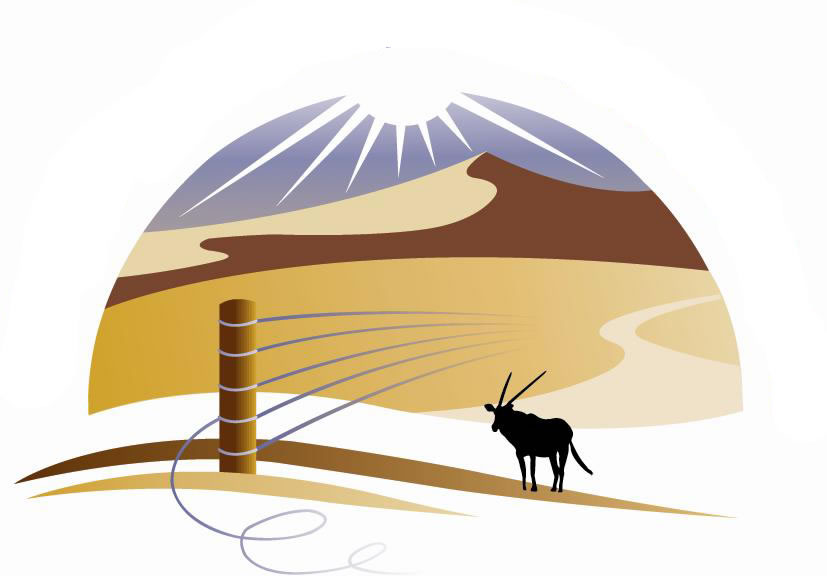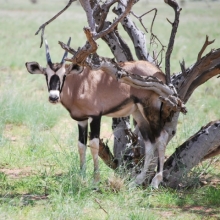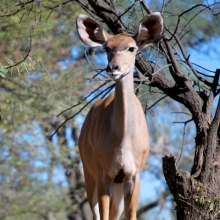Game counts and estimates
Two methods are used to assess game numbers in the landscape:
1. Game Counts
Game counts are carried out regularly to assess population sizes, distributions and status. Game counts were initiated in NamibRand Nature Reserve in 2005 and extended in 2009 to include the Pro-Namib Conservancy. For the purposes of the count, the total area is divided into game count zones, each with its own standardised route/s.
Zones
Between 2009 and 2011 there were 9 game count zones all of which were counted as part of the NamibRand Nature Reserve (NRN01 - NRN09). Exclesior was included as NRNR09 although it is not part of the reserve. Each zone had one game count route. In 2012, an additional zone was added to the south (NRN10), also with one game count route. In 2015, 9 new zones were added: Kulala Wilderness Reserve (2 routes), MET (3), Namib Desert Lodge (3), Neuhof (2), Neuras (2), Solitaire (3), Sossusvlei Lodge (2), Tsondab River (3), Weltevrede (1) bringing the total number of zones to 19 and routes to 31.
Habitats
In addition, the landscape has been zoned according to habitat. Four habitats have been defined: dune and sandy plain; sand and gravel interface; gravel plain; inselberg/mountain.
Methodology
2009 - 2014:
All animals were counted and the distance to each animal, or group of animals, was recorded at right angles to the vehicle. This distance allowed us to apply a species' correction factor for each type of animal counted. This was done in order to compensate for animals not seen. For example, the chances of seeing large animals like zebra over a great distance are much higher than the probability or chances of seeing a smaller animal like a steenbok. Therefore a correction factor of 1.2 can be used for zebra (because one is likely to see most of them over a set distance). A much higher correction factor of 10 can be used for steenbok – over the same set distance one is likely to see only a few steenbok while the rest will be hidden by "dead" ground or obstacles.
A standard strip-width of 1000m was used, so that the area covered could then be multiplied into the overall area. This is known as an area correction factor (the number of times a 1000m wide strip will fit into the whole area). Only the animals inside the 1000m area (500m on either side of the road) were multiplied by the correction factor, in order to determine the population estimate for the given area.
Population, biomass and density estimates were calculated for each game count zone.
2015 onwards:
2. Supplementary Game Estimates
Species and Biomass
| Species | Biomass (kg) |
| Blesbok | 100 |
| Gemsbok | 220 |
| Hartebeest | 130 |
| Kudu | 180 |
| Ostrich | 68 |
| Springbok | 38 |
| Steenbok | 11 |
| Zebra, Burchell's | 300 |
The category '8 species combined', used in the results, includes the 8 species listed above.
For some areas there are also data for:
| Species | Biomass (kg) |
| Eland | |
| Giraffe | |
| Klipspringer | 12 |
| Ludwig's bustard | |
| Zebra, Mountain | 280 |
Results




